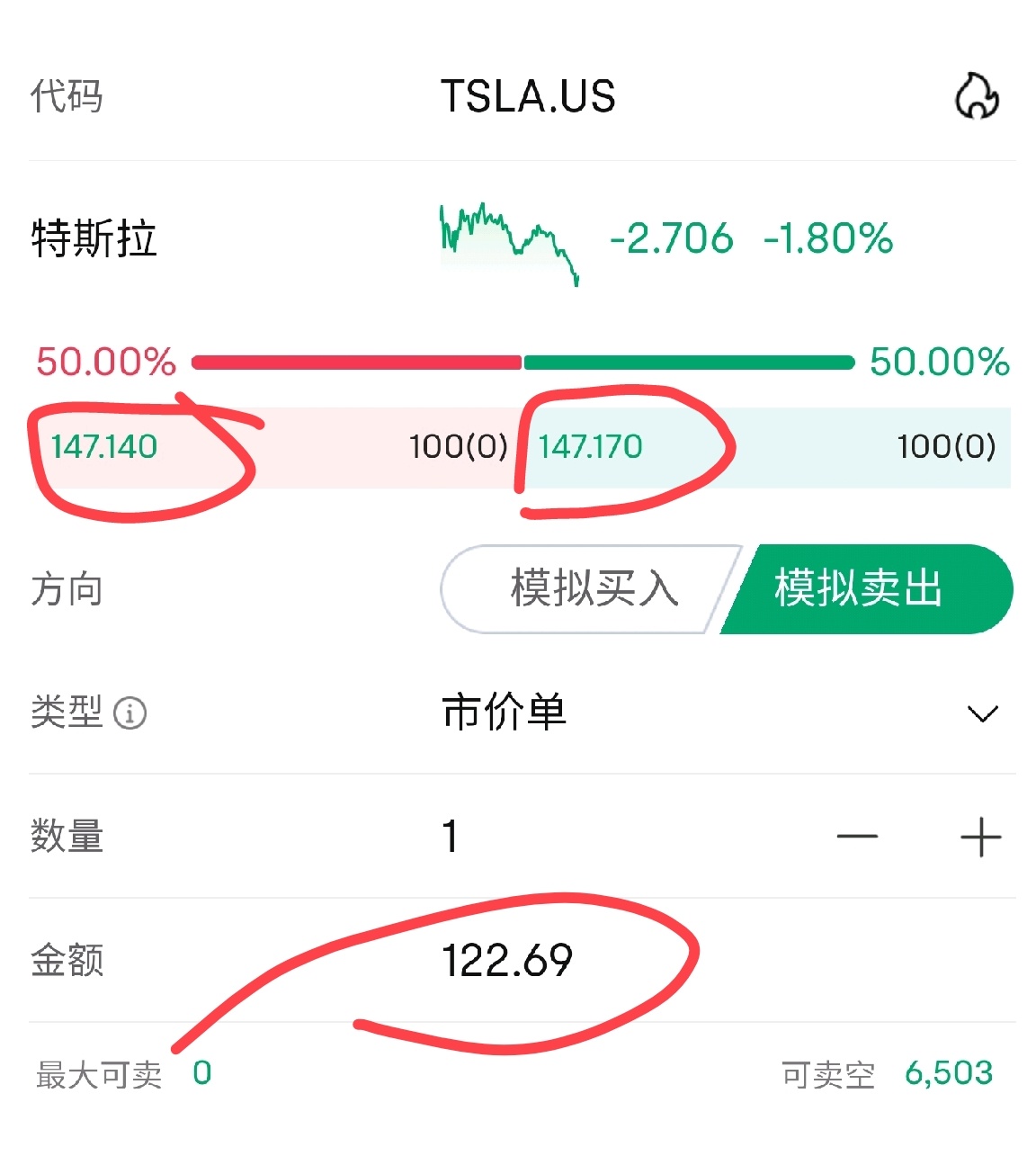$Tesla (TSLA.US)$ Is there any difference between direct sho...


Is there any difference between direct shorting of stocks and bearish options?
Figure 1. The stock price at the time was 147.140 and directly shorted. Why was the amount below 122.69? Is this the shorting transaction price?
Why is the amount of the options bearish in Figure 2 is 5 yuan.
Disclaimer: Community is offered by Moomoo Technologies Inc. and is for educational purposes only.
Read more
Comment
Sign in to post a comment

本白色的東京櫻花 OP : Please ask for guidance from seniors![undefined [undefined]](https://static.moomoo.com/nnq/emoji/static/image/default/default-black.png?imageMogr2/thumbnail/36x36)
Kenzo27 : First of all, options trading is risky, because it is a leveraged trade of 10 to 100 times, so it is not recommended for beginners to try it.
Options are also divided into bullish and bearish options. Example: TSLA240419P145. This is Tesla, a put option (p=put) which expires on April 19 (240419) and has an exercise price of 145. An option is basically a contract, a right.
A call option means you have the right to buy the underlying asset at a specific price at a certain time in the future, while a put option means that the buyer has the right to sell the underlying asset at a specific price at a certain time in the future. So the put option above is for you to sell Tesla shares at a price of 145 dollars (exercise price) per share on April 19. So assuming that on April 19, the price of Tesla's original stock is higher than 145, then as a put option contract holder, you will naturally lose money because you are selling cheaper.
After understanding the above, it will be clear that an option is not an underlying stock; it is just a contract, so you said that what you pay (e.g. USD5 in the image above) is just a contract fee. The one-instalment option contract is $5, which means you used the principal amount of $500 (100 shares in one option) to buy a trading right that would have required more than 10,000 dollars (if trading 100 shares).
The above is a “buy” option, but if you “sell” an option, this is the opposite operation. Example: If you sell a put option, you are bullish on Tesla. Therefore, before trading, you must clearly understand whether to buy or sell options
However, the profit and loss of options depends not only on the rise and fall of stock prices, but also on other factors, such as time costs, hidden volatility, etc. So it's more complicated
本白色的東京櫻花 OP Kenzo27 : Thank you (Good people have a peaceful life)
Moomoo Buddy : Dear client, options also have their own market price, but because of one US option, one contact equals to 100 underlying shares, so when you trade like one option, the order amount will become option market price*100. For more details about options, it is encouraged to learn either from 'app-discover-learn-options' or some courses from the Internet. Thank you for your support and have a nice day!![undefined [undefined]](https://static.moomoo.com/nnq/emoji/static/image/default/default-black.png?imageMogr2/thumbnail/36x36)